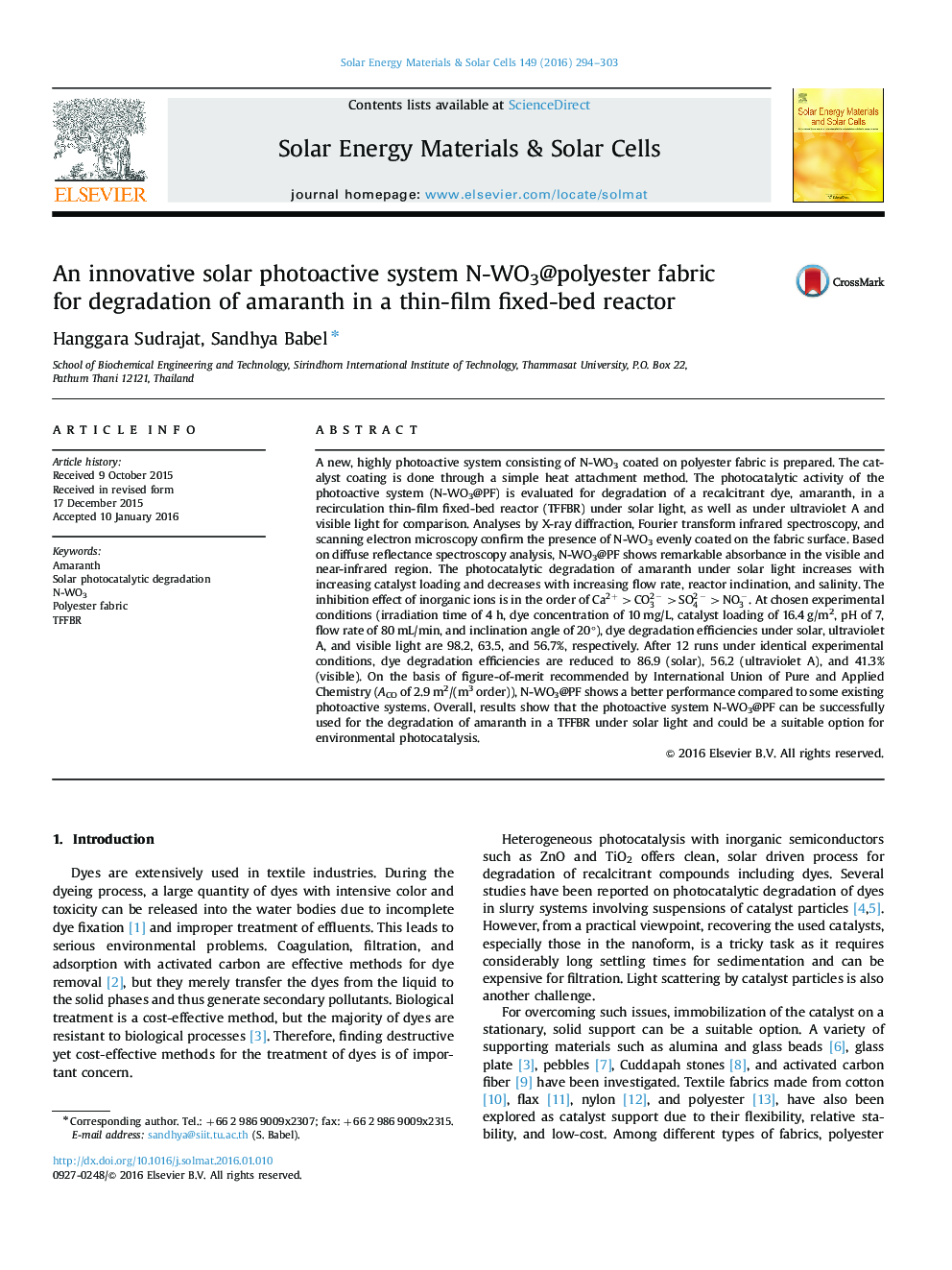| Article ID | Journal | Published Year | Pages | File Type |
|---|---|---|---|---|
| 6534794 | Solar Energy Materials and Solar Cells | 2016 | 10 Pages |
Abstract
A new, highly photoactive system consisting of N-WO3 coated on polyester fabric is prepared. The catalyst coating is done through a simple heat attachment method. The photocatalytic activity of the photoactive system (N-WO3@PF) is evaluated for degradation of a recalcitrant dye, amaranth, in a recirculation thin-film fixed-bed reactor (TFFBR) under solar light, as well as under ultraviolet A and visible light for comparison. Analyses by X-ray diffraction, Fourier transform infrared spectroscopy, and scanning electron microscopy confirm the presence of N-WO3 evenly coated on the fabric surface. Based on diffuse reflectance spectroscopy analysis, N-WO3@PF shows remarkable absorbance in the visible and near-infrared region. The photocatalytic degradation of amaranth under solar light increases with increasing catalyst loading and decreases with increasing flow rate, reactor inclination, and salinity. The inhibition effect of inorganic ions is in the order of Ca2+>CO32â>SO42â>NO3â. At chosen experimental conditions (irradiation time of 4 h, dye concentration of 10 mg/L, catalyst loading of 16.4 g/m2, pH of 7, flow rate of 80 mL/min, and inclination angle of 20°), dye degradation efficiencies under solar, ultraviolet A, and visible light are 98.2, 63.5, and 56.7%, respectively. After 12 runs under identical experimental conditions, dye degradation efficiencies are reduced to 86.9 (solar), 56.2 (ultraviolet A), and 41.3% (visible). On the basis of figure-of-merit recommended by International Union of Pure and Applied Chemistry (ACO of 2.9 m2/(m3 order)), N-WO3@PF shows a better performance compared to some existing photoactive systems. Overall, results show that the photoactive system N-WO3@PF can be successfully used for the degradation of amaranth in a TFFBR under solar light and could be a suitable option for environmental photocatalysis.
Related Topics
Physical Sciences and Engineering
Chemical Engineering
Catalysis
Authors
Hanggara Sudrajat, Sandhya Babel,
